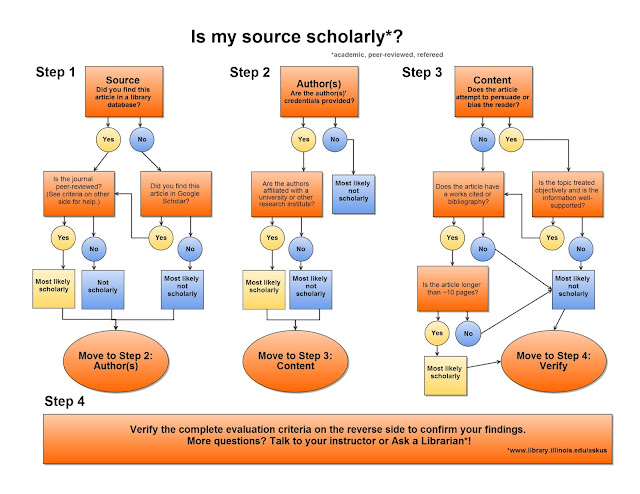
The Creative Classroom by Mitchell Lopate, M.A.T. = Academic humanities advising-mentoring, tutoring, writing support: 25 years college & university and middle-elementary education in-class/online with a B.A. in psychology and a masters in education. (PS: it's fun.) Cross-curriculum humanities concepts, career counseling, MBA instruction, composition and research methods, and values, ethics, and writing. “Learn by example, succeed by effort." mitchLOP8@yahoo.com / 840-216*1014
Thursday, May 11, 2023
Friday, May 5, 2023
On speaking a foreign language for business or travel
One of the questions I asked as a judge at a masters degree contest at an international business university: "What three languages would you learn that you do not speak now--and why would you use them for international business?" (My answers, just for the record: "Spanish, Portuguese, and French." (I chose Spanish and Portuguese for South America, and French because it is spoken in so many other countries.)
I've also recommended for college-university credits that if someone is already fluent in a foreign language and it is offered by their college-university of choice, take it at the basic level and ace the class for elective credits.
Wednesday, May 3, 2023
The Creative Classroom Kitchen: food that prepares itself on command!
(Sigh. THIS totally makes my efforts look like I'm out of my league in the kitchen.)
Monday, April 17, 2023
Panda punctuation: Eats, Shoots & Leaves book
A panda walks into a café. He orders a sandwich, eats it, then draws a gun and fires two shots in the air.
"Why?" asks the confused waiter, as the panda makes towards the exit. The panda produces a badly punctuated wildlife manual and tosses it over his shoulder.
"I'm a panda," he says at the door. "Look it up."
The waiter turns to the relevant entry in the manual and, sure enough, finds an explanation.
"Panda. Large black-and-white bear-like mammal, native to China. Eats, shoots & leaves."
It's available on Amazon.com and also abebooks.com. Go get a copy.
This is also my defense of the Oxford comma. But in this case, the first comma is wrong and should not have been included.
Tuesday, April 11, 2023
Crafty commas cause commotions in creative classrooms
Try these rules (and spare the old man's life and your error in meal choice!)
Between words or word groups in a series
Example: Medical supplies, food, blankets, and clothing were rushed to the flood area.
To separate parts of a compound sentence
Example: Many homes were flooded, and owners had to be rescued by police. (You can make two sentences: the comma helps split them apart.)
To separate a direct quote from the rest of a sentence.
Example: “We’re going home,” said Nick. She answered, “No, I’m staying.”
When you speak to someone, use a comma to set apart their name.
Example: “Alicia, please come and help me.”
IF YOU BEGIN A SENTENCE WITH “Yes,” “No,” “Well,” “Oh,”…..
- “Yes, I want to get better grades!” “No, I did not forget!”
- “Well, I’ll just try it again.”
- “Oh, I did my work yesterday.”
Example: “Peter, Paul, and Mary were a folk group during the 1960s.”
*(This often appears as “Peter, Paul and Mary.”)
(But this is the reason for the Oxford comma: otherwise, how do we separate the 2nd and 3rd members or items?)
Transition phrases get help from commas
- Example: Generally, one can see a transition phrase followed by a comma.
- Example: Moreover, they are at the head of a sentence.
- Example: However, there’s always someone who forgets them!
- Example: Therefore, use them with a comma!
- Example: In fact, they work much like transitions.
- Example: On the other hand, they lend a big hand to a sentence.
- Example: For that matter, they handle the work of a smaller phrase.
- Example: All things considered, they are useful.
- Example: As far as I’m concerned, it’s just about obvious that a comma makes a difference.
- Example: In spite of the best intentions, students still argue and fuss that they don’t understand them.
- Example: After all the presentations are done, I’m sure everyone grasps the idea—or else.
If two or more adjectives describe or modify the same noun, make sure they work separately if appropriate:
- “He was a bashful, sleepy kid.”
- “The eager, radiant princess kissed the slimy, vile frog.”
Other uses of commas
In addresses, to separate smaller from larger units: Washington, D.C.
Albertville, Alabama
Date (if day/month/year is used. NO if only month-year):
June 14, 2006, was a very good day for a wedding.
Tuesday, March 28, 2023
Rescuing Vietnamese refugees at sea: 1980 with the U.S. Navy
Yesterday marked the anniversary 46 years ago when I raised my hand and entered military service. This is one of my best and most meaningful memories.
History lesson for anyone born after 1980 and for those who ask "what is freedom?" It is the right to choose and make decisions for the well-being of oneself and one's family. It is the opportunity to find success by the efforts that are made by the individual. It is the acceptance of one's beliefs, values, and standards as long as they are in harmony with society and one's chosen country, provided that there are no significant and unbiased restrictions on those beliefs or values. It is the ability to be accepted regardless of one's skin color, even though it may be disliked or not welcomed by those with shallow minds. It is the chance to live in the United States of America.
I was aboard the USS Blue Ridge, the 7th Fleet flagship, the day these people in the movie were rescued. It makes my throat close up with memories of how hard we searched for the people who fled Vietnam in 1979-1980 in these small boats. They crammed aboard with limited food and water, and some did not make it safely to rescue efforts. On my first ship, the USS Oklahoma City (CG-5), we worked 20-hour shifts in flag administration to get the logistics and coordinated efforts of the officers who were involved in planning these rescue operations, especially in planning the P-3 Orion planes who were sent out on reconnaissance missions.
I remember the public address call that asked us for clothing donations. I gave up some dungaree pants, and I remember seeing them on one of the men who was rescued. I am so thankful that I was a sailor in the U.S. Navy.
Sunday, March 5, 2023
Creative Easter eggs!
Saturday, March 4, 2023
Sunday, February 12, 2023
Fluid Learning as a way of creative thinking-organizing
Saturday, November 19, 2022
Academic sources need authenticity
If you're in high school or enrolled in college or at a university:
Sunday, October 23, 2022
Nudibranches - the beautiful and toxic (to other creatures) sea slugs
(sea slugs) "(nudi-brinks")
Wednesday, October 19, 2022
Sunday, September 4, 2022
Mastery Criteria technique: four sites for the educator and student needs
I'm mentioning this as a teaching technique not only for younger students in elementary level but also for adults. I've learned the hard way that each of us has his or her own learning style and pace of understanding information--and processing it. That also means RETAINING it so that it becomes part of the individual's capacity to make decisions and react to personal and social cues.
This is not meant by me for just an IEP. Instead, I am reminding everyone who has a role in education that learning is not a cookie-cutter process. Please consider levels of mastery criteria in your method of teaching. I am including a link for those with special "on the spectrum" needs.
https://theautismhelper.com/writing-the-iep-goal-mastery-criteria/
https://www.theintentionaliep.com/determining-iep-goal-mastery-criteria/
http://dcmsspaces.weebly.com/uploads/5/2/6/9/5269188/_mastery_obj.pdf
https://www.educationworld.com/a_curr/columnists/jones/jones007.shtml
Thursday, August 18, 2022
Jeff "Skunk" Baxter - ASYMMETRICAL THINKING IN A CONVENTIONAL WORLD.
You're welcome.
Monday, July 25, 2022
Why do hammerhead sharks look like that?
Just because there's going to be someone out there who asks, "Why?"
Friday, July 22, 2022
Thursday, July 21, 2022
Sunday, July 17, 2022
The patrons of arts and sciences: the nine Muses of Greek mythology
The Nine Muses were minor goddesses of Greek mythology, who were closely linked to the arts and sciences. They guided and inspired mortals in their creation of literature, music, drama and other artistic and scientific ventures. The Muses rarely featured in any major myths of their own, but they were often invoked and remained among the most important of the Greek pantheon of deities.
Analytically The Nine Muses Are:
1. Clio: The Muse Clio discovered history and guitar. History was named Clio in the ancient years, because it refers to “kleos” the Greek word for the heroic acts. Clio was always represented with a clarion in the right arm and a book in the left hand.
2. Euterpe: Muse Euterpe discovered several musical instruments, courses and dialectic. She was always depicted holding a flute, while many instruments were always around her.
3. Thalia: Muse Thalia was the protector of comedy; she discovered comedy, geometry, architectural science and agriculture. She was also protector of Symposiums. She was always depicted holding a theatrical – comedy mask.
4. Melpomene: Opposite from Thalia, Muse Melpomene was the protector of Tragedy; she invented tragedy, rhetoric speech and Melos. She was depicted holding a tragedy mask and usually bearing a bat.
5. Terpsichore: Terpsichore was the protector of dance; she invented dances, the harp and education. She was called Terpsichore because she was enjoying and having fun with dancing ( “Terpo” in Greek refers to be amused). She was depicted wearing laurels on her head, holding a harp and dancing.
6. Erato: Muse Erato was the protector of Love and Love Poetry – as well as wedding. Her name comes from the Greek word “Eros” that refers to the feeling of falling in love. She was depicted holding a lyre and love arrows and bows.
7. Polymnia: Muse Polymnia was the protector of the divine hymns and mimic art; she invented geometry and grammar. She was depicted looking up to the Sky, holding a lyre.
8. Ourania: Muse Ourania was the protector of the celestial objects and stars; she invented astronomy. She was always depicted bearing stars, a celestial sphere and a bow compass.
9. Calliope: Muse Calliope was the superior Muse. She was accompanying kings and princes in order to impose justice and serenity. She was the protector of heroic poems and rhetoric art. According to the myth, Homer asks from Calliope to inspire him while writing Iliad and Odyssey, and, thus, Calliope is depicted holding laurels in one hand and the two Homeric poems in the other hand.
The Nine Muses have been inspiring artists since the antiquity and there countless paintings, drawings, designs, poems and statues dedicated to them. All artists of the Renaissance acknowledged their importance in artistic creation, dedicating their works to the Muses.
Today, the most famous depiction of the Muses in sculpture is in Greece, in Corfu; the Empress Sissi of Austria had their statues made for her, in order to ornament the garden of her retreat house in Corfu, the famous Achilleion.
Thursday, July 14, 2022
From the mind of a child...comes awareness of skills and talents
Before you say "Oh, how cute," REALLY look at this image and consider: this kid's mind is already thinking on higher levels. His parents might not even realize it now. But he is taking his view of things--including spatial awareness--to a different point. This kid may be an artist in the making, or an engineer--or both. And he is showing his talents!!













